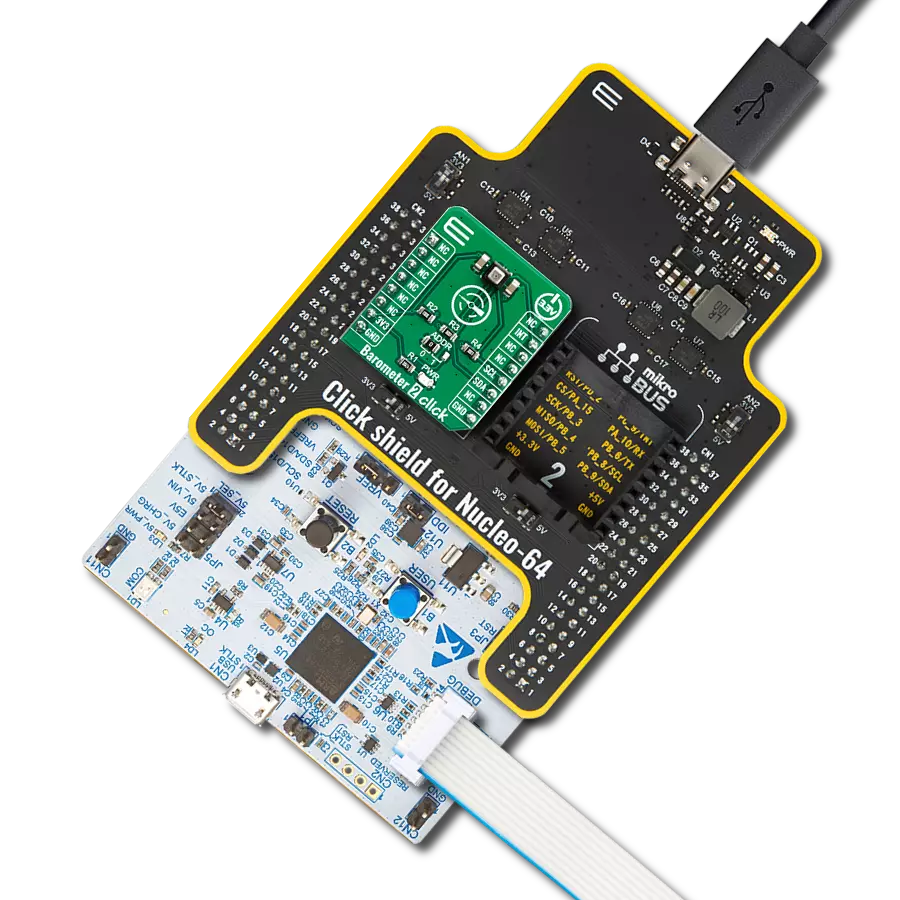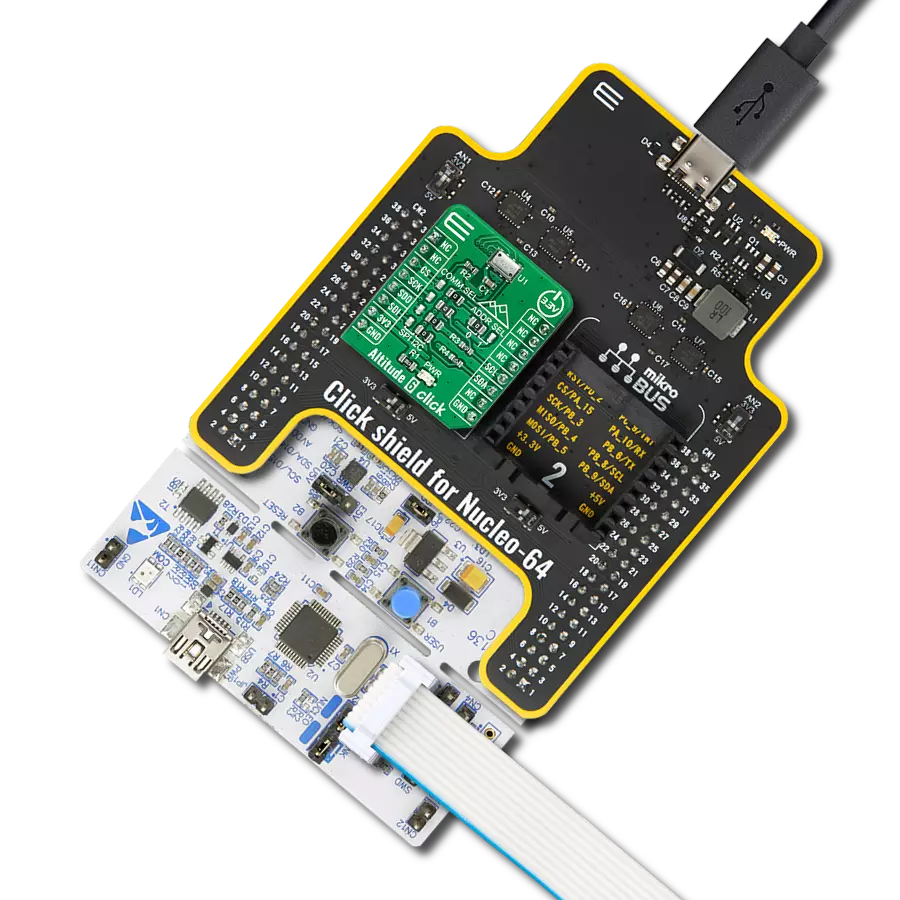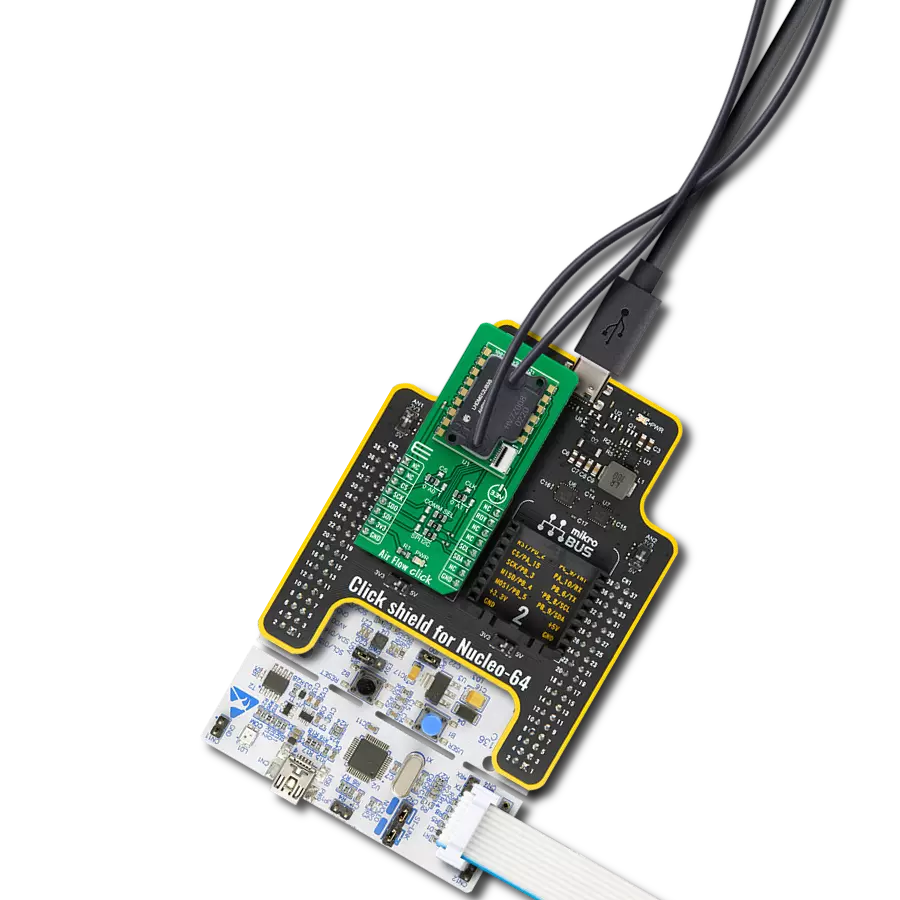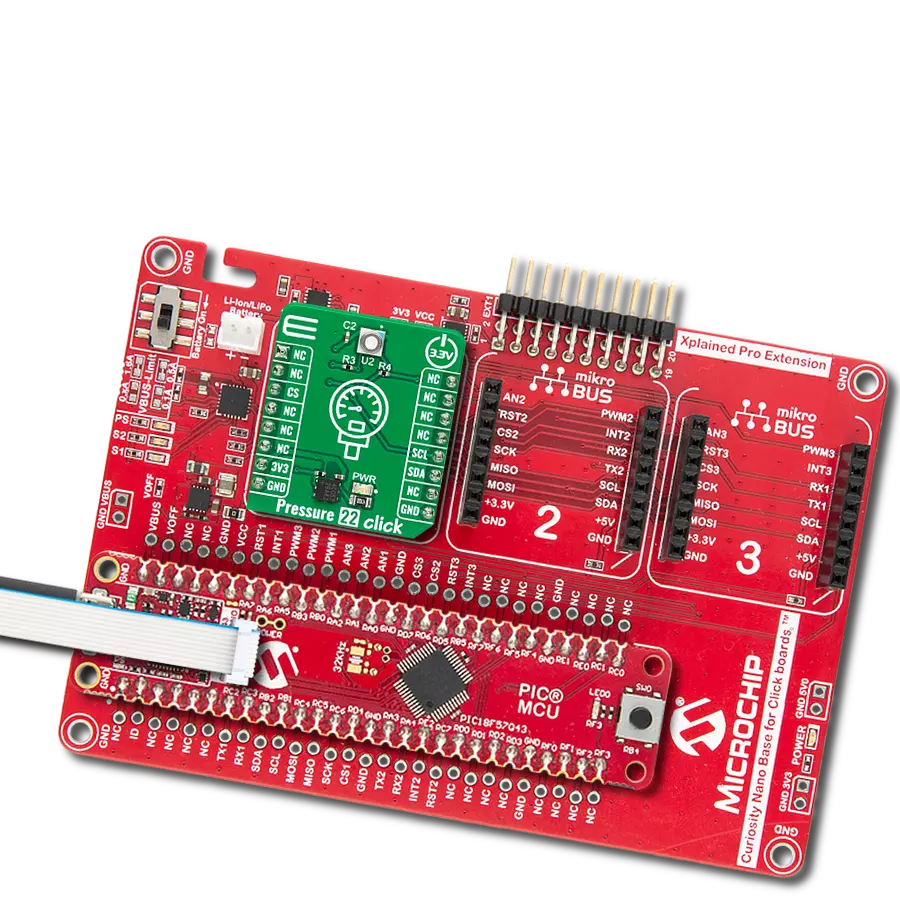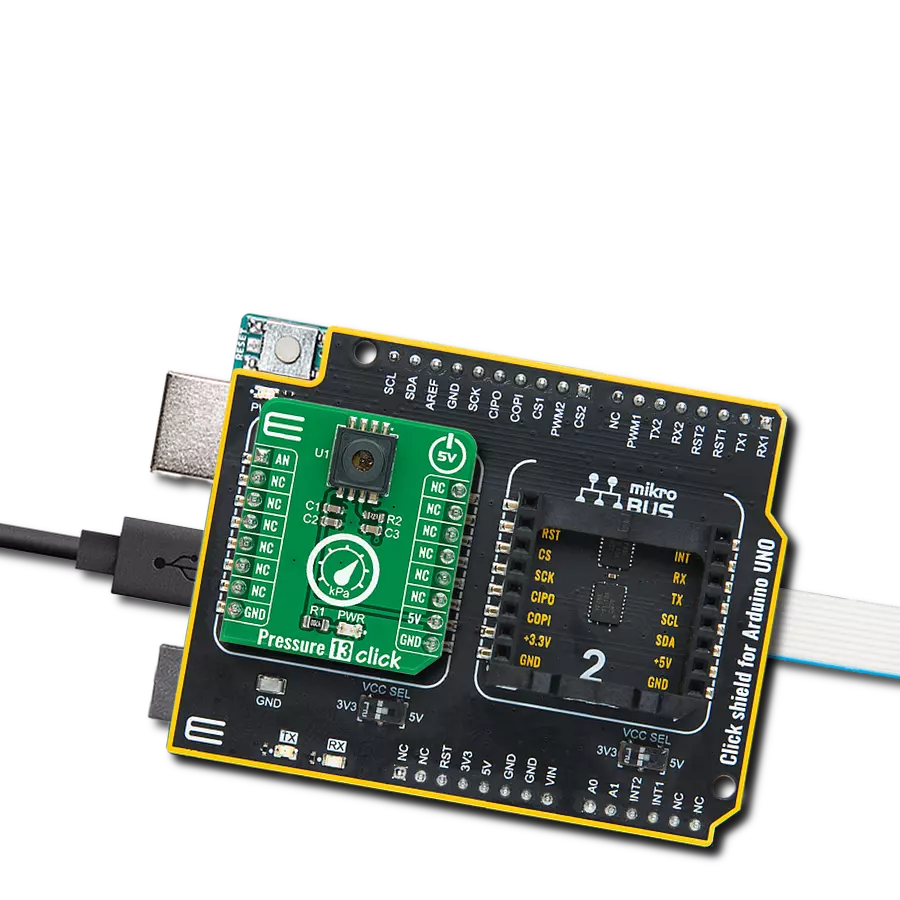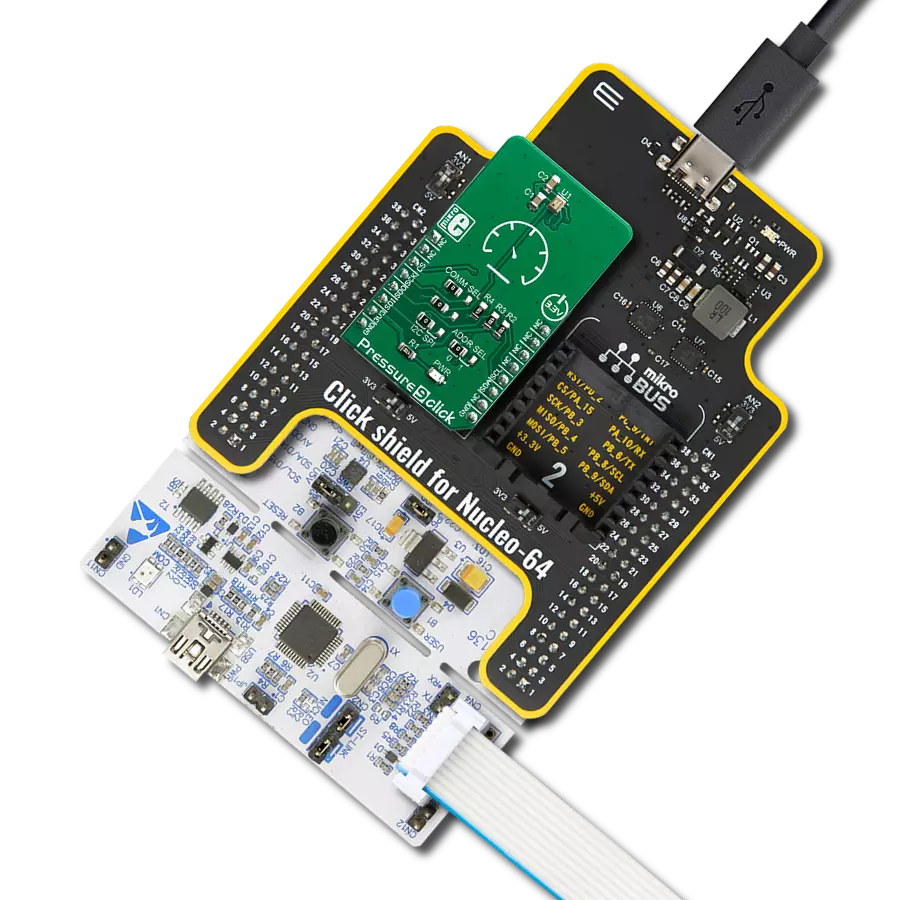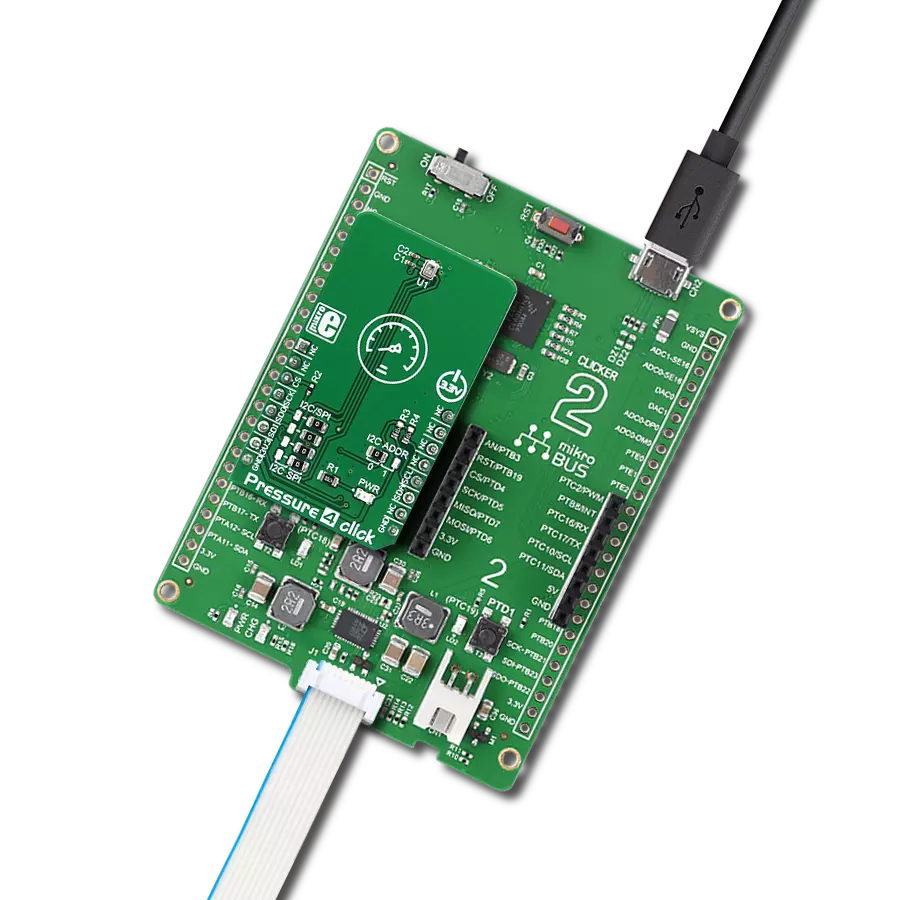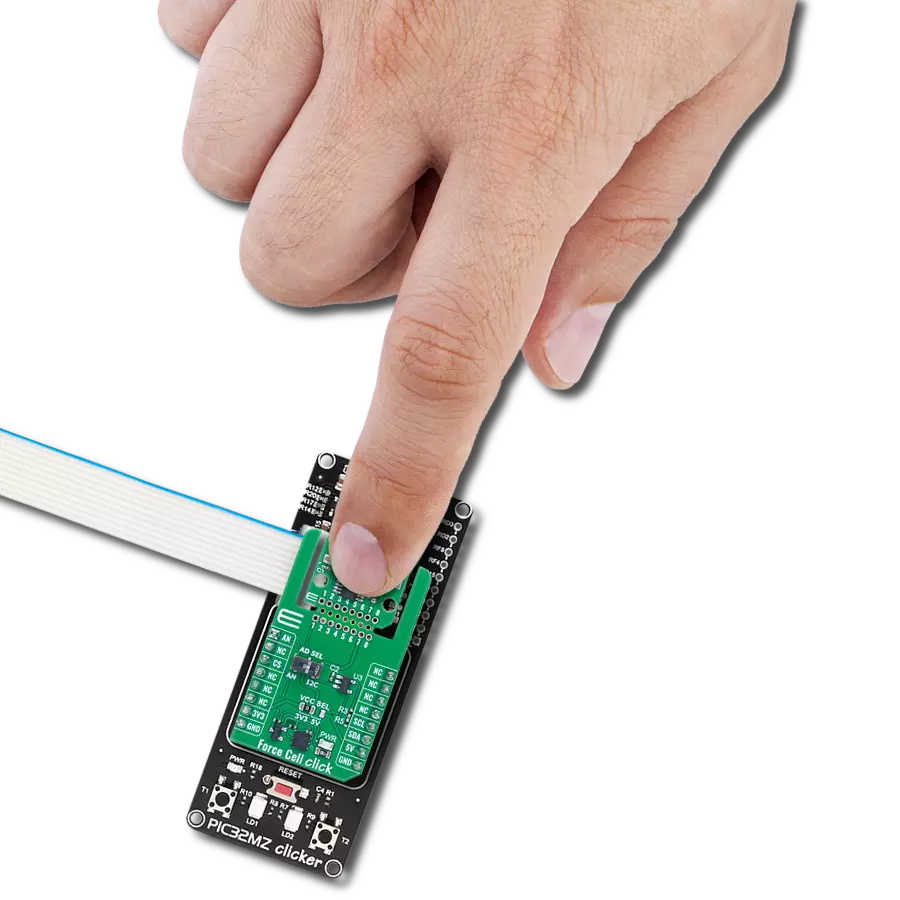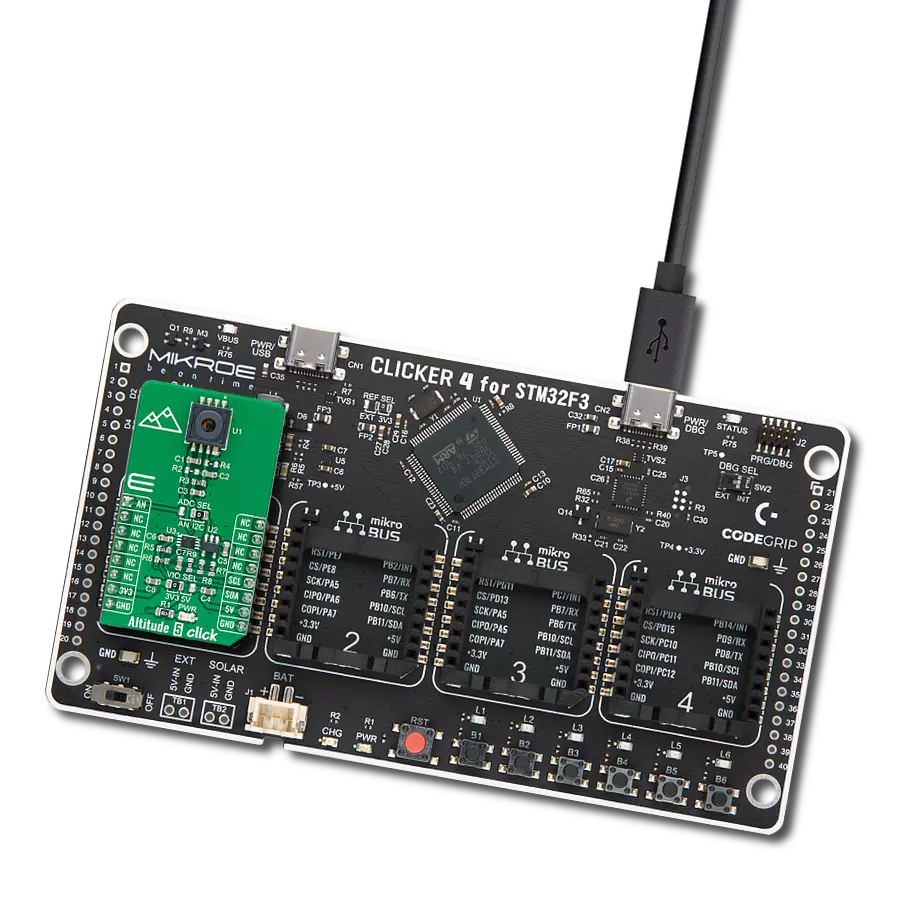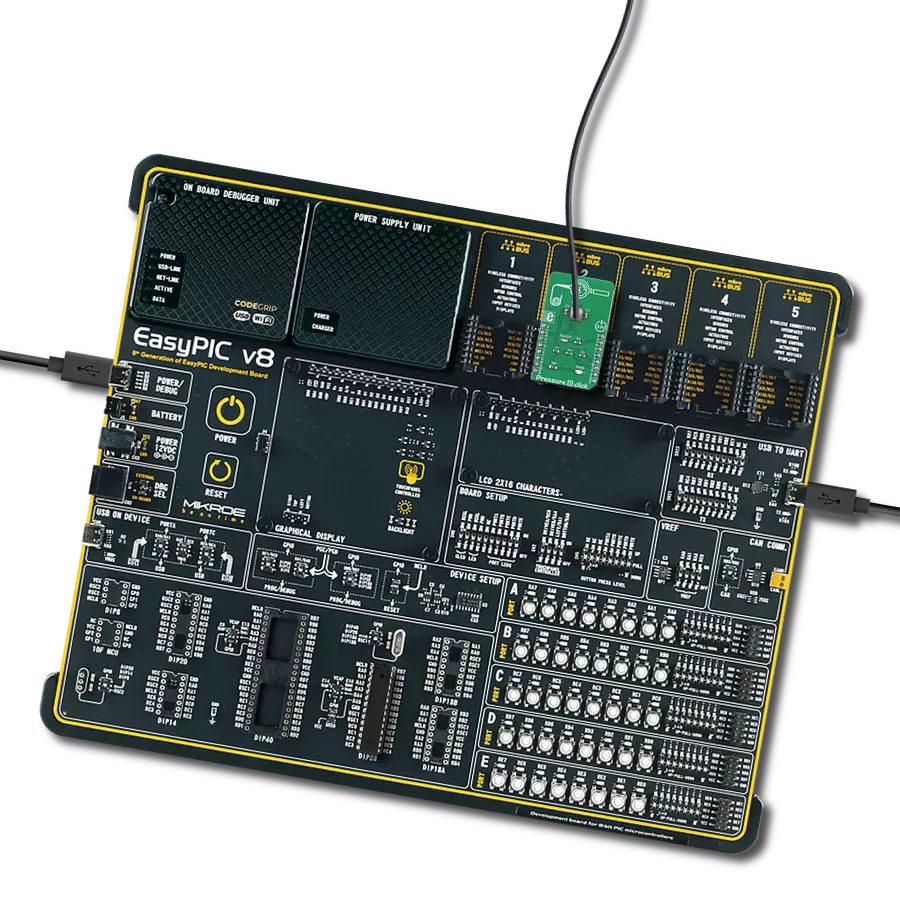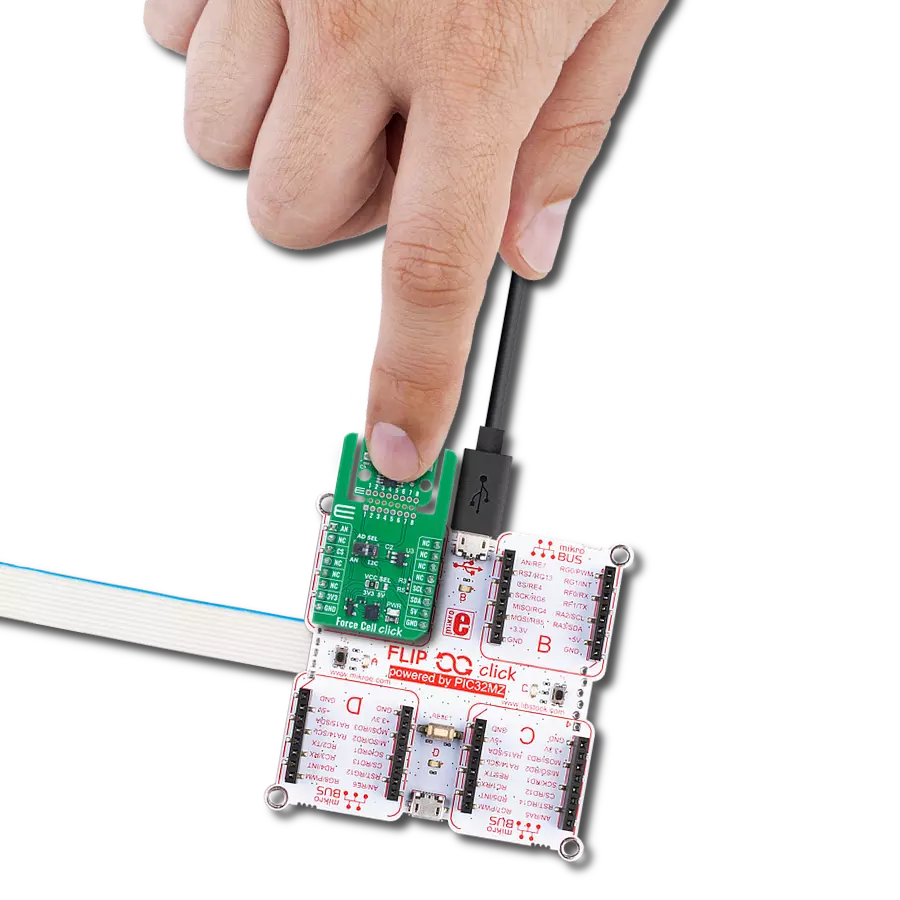Explore the principles and technology behind differential pressure sensors, highlighting their critical role in modern measurement systems
A
A
Hardware Overview
How does it work?
Diff Press 2 Click is based on the SDP31-500PA, a highly versatile differential pressure sensor designed for high-volume applications from Sensirion. It builds on the next-generation CMOSens® sensor chip at the heart of Sensirion’s new differential pressure and flows sensing platform. It features fast measurement speed, excellent accuracy, and long-term stability, has no zero-point drift, and offers an ultra-low power consumption, making the SDP31-500PA the perfect choice for applications where accurate and reliable pressure monitoring is essential. The SDP31-500PA is very flexible regarding
measurement speed. This flexibility allows for optimizing the sensor’s performance for a specific application and for adapting the sensor to different use cases. For example, the sensor detects the smallest and quickest changes in one use case, whereas, in another mode, the sensor can measure in larger intervals while consuming only a little energy. Diff Press 2 Click communicates with MCU using the standard I2C 2-Wire interface to read data and configure settings, supporting Fast Mode up to 400kHz. Besides, the SDP31-500PA allows choosing the least significant bit (LSB) of its I2C slave address
using the SMD jumper labeled ADDR SEL. It also possesses an additional interrupt signal, routed on the INT pin of the mikroBUS™ socket labeled as INT, indicating when a specific interrupt event occurs, such as whether new measurement results are available. This Click board™ can operate with either 3.3V or 5V logic voltage levels selected via the VCC SEL jumper. This way, both 3.3V and 5V capable MCUs can use the communication lines properly. Also, this Click board™ comes equipped with a library containing easy-to-use functions and an example code that can be used as a reference for further development.
Features overview
Development board
Flip&Click PIC32MZ is a compact development board designed as a complete solution that brings the flexibility of add-on Click boards™ to your favorite microcontroller, making it a perfect starter kit for implementing your ideas. It comes with an onboard 32-bit PIC32MZ microcontroller, the PIC32MZ2048EFH100 from Microchip, four mikroBUS™ sockets for Click board™ connectivity, two USB connectors, LED indicators, buttons, debugger/programmer connectors, and two headers compatible with Arduino-UNO pinout. Thanks to innovative manufacturing technology,
it allows you to build gadgets with unique functionalities and features quickly. Each part of the Flip&Click PIC32MZ development kit contains the components necessary for the most efficient operation of the same board. In addition, there is the possibility of choosing the Flip&Click PIC32MZ programming method, using the chipKIT bootloader (Arduino-style development environment) or our USB HID bootloader using mikroC, mikroBasic, and mikroPascal for PIC32. This kit includes a clean and regulated power supply block through the USB Type-C (USB-C) connector. All communication
methods that mikroBUS™ itself supports are on this board, including the well-established mikroBUS™ socket, user-configurable buttons, and LED indicators. Flip&Click PIC32MZ development kit allows you to create a new application in minutes. Natively supported by Mikroe software tools, it covers many aspects of prototyping thanks to a considerable number of different Click boards™ (over a thousand boards), the number of which is growing every day.
Microcontroller Overview
MCU Card / MCU
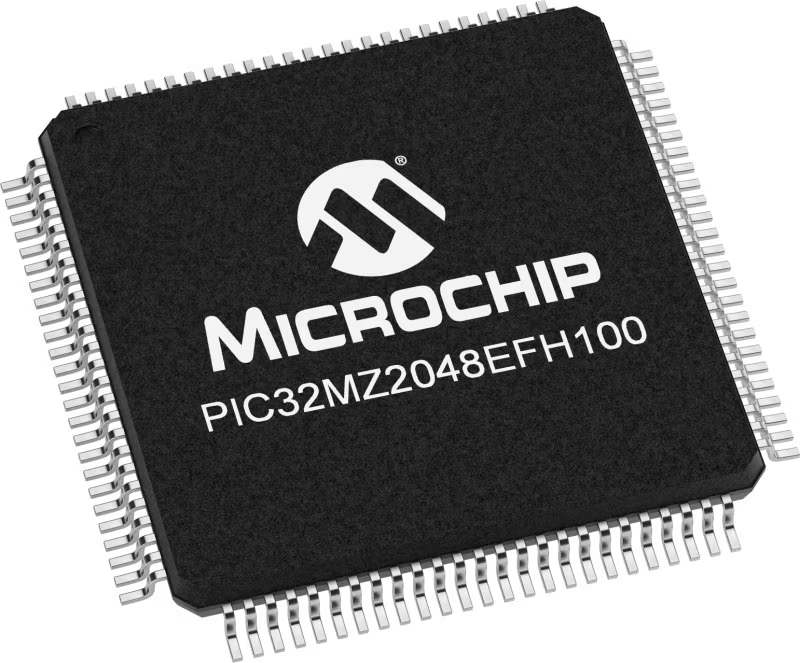
Architecture
PIC32
MCU Memory (KB)
2048
Silicon Vendor
Microchip
Pin count
100
RAM (Bytes)
524288
Used MCU Pins
mikroBUS™ mapper
Take a closer look
Click board™ Schematic

Step by step
Project assembly
Software Support
Library Description
This library contains API for Diff Press 2 Click driver.
Key functions:
diffpress2_get_id- Reads device ID'sdiffpress2_reset- Reset devicediffpress2_trigger_measurement- Pressure and temperature reading
Open Source
Code example
The complete application code and a ready-to-use project are available through the NECTO Studio Package Manager for direct installation in the NECTO Studio. The application code can also be found on the MIKROE GitHub account.
/*!
* @file main.c
* @brief DiffPress2 Click example
*
* # Description
* This example application showcases ability for device
* to read and calculate mass flow or diff press pressure
* in Pascals and temperature in degrees Celsius.
*
* The demo application is composed of two sections :
*
* ## Application Init
* Initialization of module communication(I2C, UART) and
* additional interrupt pin. Resets device and reads
* serial and product ID's and logs them.
*
* ## Application Task
* Read and calculate differential in Pascal and temperature
* in degrees Celsius every 300ms.
*
* @author Luka Filipovic
*
*/
#include "board.h"
#include "log.h"
#include "diffpress2.h"
static diffpress2_t diffpress2;
static log_t logger;
void application_init ( void )
{
log_cfg_t log_cfg; /**< Logger config object. */
diffpress2_cfg_t diffpress2_cfg; /**< Click config object. */
/**
* Logger initialization.
* Default baud rate: 115200
* Default log level: LOG_LEVEL_DEBUG
* @note If USB_UART_RX and USB_UART_TX
* are defined as HAL_PIN_NC, you will
* need to define them manually for log to work.
* See @b LOG_MAP_USB_UART macro definition for detailed explanation.
*/
LOG_MAP_USB_UART( log_cfg );
log_init( &logger, &log_cfg );
log_info( &logger, " Application Init " );
// Click initialization.
diffpress2_cfg_setup( &diffpress2_cfg );
DIFFPRESS2_MAP_MIKROBUS( diffpress2_cfg, MIKROBUS_1 );
err_t init_flag = diffpress2_init( &diffpress2, &diffpress2_cfg );
if ( I2C_MASTER_ERROR == init_flag )
{
log_error( &logger, " Application Init Error. " );
log_info( &logger, " Please, run program again... " );
for ( ; ; );
}
if ( diffpress2_default_cfg ( &diffpress2 ) )
{
log_error( &logger, " Default configuration." );
for ( ; ; );
}
log_printf( &logger, " > Product ID: 0x%.8LX\r\n", diffpress2.product_id );
log_printf( &logger, " > Serial ID: 0x%.8LX%.8LX\r\n",
diffpress2.serial_id[ 0 ], diffpress2.serial_id[ 1 ] );
log_info( &logger, " Application Task " );
}
void application_task ( void )
{
float pressure;
float temperature;
if ( diffpress2_trigger_measurement( &diffpress2, DIFFPRESS2_CMD_TRIGGER_MEAS_DIFF_PRESS,
&pressure, &temperature ) )
{
log_error( &logger, " Read data." );
}
else
{
log_printf( &logger, " > Pressure[Pa]: %.2f\r\n", pressure );
log_printf( &logger, " > Temperature[degC]: %.2f\r\n", temperature );
log_printf( &logger, "*************************************\r\n" );
}
Delay_ms ( 300 );
}
int main ( void )
{
/* Do not remove this line or clock might not be set correctly. */
#ifdef PREINIT_SUPPORTED
preinit();
#endif
application_init( );
for ( ; ; )
{
application_task( );
}
return 0;
}
// ------------------------------------------------------------------------ END
Additional Support
Resources
Category:Pressure



















